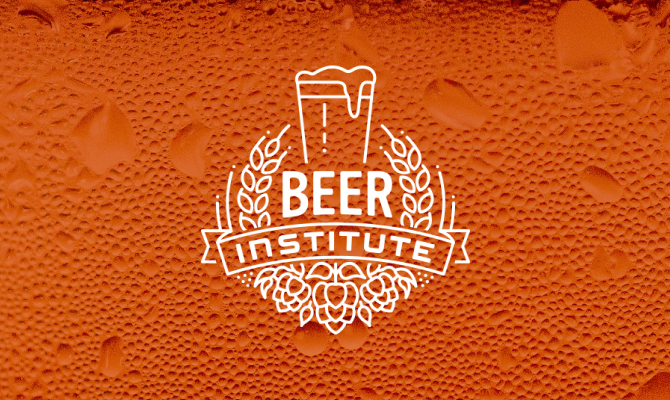
Off-premise beer category dollar sales increased 15.7% year-to-date through January 23, compared to the same period last year, market research firm NielsenIQ reported.
For the four weeks ending January 23 (which includes December 28-31, 2020), off-premise dollars sales of the beer category — which includes core beer, flavored malt beverages, hard seltzers, ciders and malt liquor — increased 14.2%, indicating slight acceleration after January 1.
Dollar sales of hard seltzer outpaced the overall beer category to start the year, increasing 88% year-to-date, indicating a slight acceleration over the 84.3% increase over the last four weeks.
Other segments that outpaced overall category trends include:
- Imports (L4W: +14.7%, YTD: +17.5%)
- Craft (L4W: +17.3%, YTD: +19.4%)
- Domestic super premiums (L4W: +17.4%, YTD: +18.5%)
- FMBs excluding hard seltzer (L4W: +19.5%, YTD: +18.5%).
Within the hard seltzer segment, category leaders White Claw (Mark Anthony Brands) and Truly Hard Seltzer (Boston Beer Company) both saw increases in dollar sales in the latest four weeks, +39.9% and +132.1%, respectively.
“Importantly, hard seltzer sales performance was strong overall, especially in light of increasingly tougher comps and some residual industry-wide can shortage issues,” Goldman Sachs Equity Research team wrote in its Americas Beverages report.
Cycling its January 2020 launch, Anheuser-Busch InBev’s Bud Light Seltzer’s dollar sales increased 307% for the four-week period ending January 23, and 189.4% year-to-date.
Within the hard seltzer segment, White Claw continues to shed share. Its market share declined 13 points year-over-year to 45.7% in the two weeks that ended January 23, according to Goldman Sachs. In the same period, Truly’s share was 28.1%, followed by Bud Light Seltzer (9.8%), Constellation Brands’ Corona Hard Seltzer (3.2%), and Molson Coors Beverage Company’s Coors Seltzer (1.1%).
Within the FMB segment excluding hard seltzers, Boston Beer’s Twisted Tea family posted the largest dollar sales increase — up 51% during the last four weeks, with slight acceleration year-to-date (+53.4%). Mike’s Hard Lemonade’s dollar sales increased 20.7% over the last four weeks, and 23% year-to-date. Dollar sales of A-B’s Ritas family declined 24.7% over the last month.
Dollar sales of Nielsen’s top five craft brand families each accelerated after January 1:
- Molson Coors’ Blue Moon (L4W: 20.2%, YTD: 22.6%)
- Sierra Nevada (L4W: 18.3%, YTD: 20.8%)
- New Belgium (L4W: 40.5%, YTD: 42.5%)
- Boston Beer’s Samuel Adams (L4W: 5.2%, YTD: 7.3%)
- Heineken-owned Lagunitas (L4W: 9.8%, YTD: 11.7%).

Beer Institute: Domestic Tax Paid Shipments Decline 0.5% in 2020
Domestic brewers shipped 0.5% less beer in 2020 than in 2019, according to domestic tax paid shipment data collected by the Alcohol and Tobacco Tax and Trade Bureau (TTB) and shared by the Beer Institute.
Through December 2020, U.S. brewers shipped 166,243,000 barrels, a decline of 859,590 barrels compared to 2019.
The month of December was somewhat flat, with a decline of -0.2%.
In 2020, the beer industry saw an equal number of months of growth and decline, as the COVID-19 pandemic caused on-premise sales to dry up for much of the year and consumers shifted their dollars to off-premise retail.
In May 2020, when on-premise retailers began to reopen and dormant, expired kegs needed to be hauled out of coolers, the industry recorded its steepest decline (-9.2%) compared to May 2019 . On the flipside, August 2020 posted the largest increase (+4.4%) versus August 2019.
Overall shipments to wholesalers increased 0.1% in 2020, with 200.7 million barrels shipped in all 50 states and Washington, D.C., the BI reported. To close out the year, brewers shipped 5.2% more volume in December 2020 than in December 2019.
At the state level, Texas surpassed California in shipments in 2020 — with 21.4 million barrels, an increase of 4.6% over 2019. California’s shipment volume declined 1.5%, to 20.8 million barrels.

Wholesaler Beer Purchasing Expands in January 2021
Total beer purchasing expanded in January 2021, according to the National Beer Wholesalers Association’s monthly Beer Purchasers’ Index (BPI).
The category’s BPI reading for last month was 66.4, a slight increase from its reading of 65.7 in January 2020. A reading of 50 or higher indicates a segment is expanding; a reading lower than 50 shows contraction.
“After a dramatic year in 2020, the BPI for January continues to show signs of returning to normal,” the NBWA wrote.
At 90, the FMB/seltzer segment recorded January 2021’s highest reading, but a slight decline (1 point) from its January 2020 index.
Premium lights and imports each posted readings of 59, The January 2021 reading for imports was down from January 2020’s reading of 64. However, this marked a significant increase for premium lights, which recorded a 38 reading in January 2020.
“This is the ninth consecutive month of above 50 readings for [premium lights],” the NBWA wrote.
Segments that contracted in January 2021 include premium regulars (48 reading), craft beer (43), cider (35) and below premiums (45).
The “at-risk inventory” — beer that is about to expire in the next 30 days — increased to a reading of 37.9, up from its December 2020 reading of 25.9, which was the largest increase in a single month reported since June 2020.
“A slower than expected December and healthy end-of-year shipments from suppliers significantly changed the industry’s inventory picture,” NBWA chief economist Lester Jones said.
